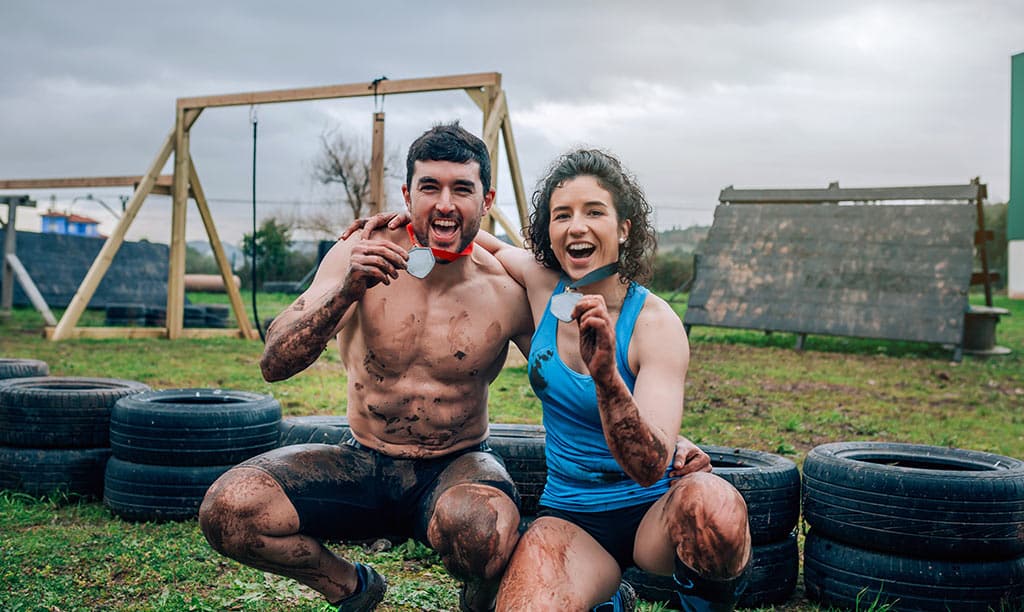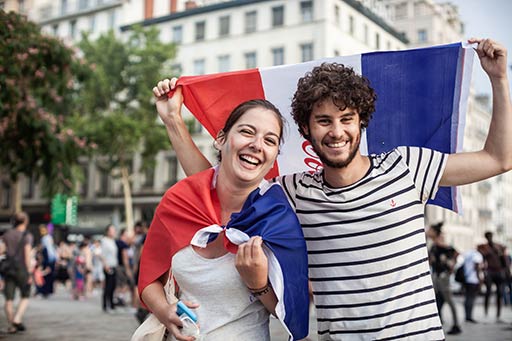It feels fantastic to use superlatives. Whatever it is that you are “best at,” whether it is the bestselling item, the most well-liked product, or the newest model, find pride in the fact that you have reached the top.
The orange ribbon-like icon in the top left of a product’s image known as the Amazon Best Seller Badge not only makes you feel good, but it also improves sales. Customers adore it, and when you have it, Amazon will reward you with higher ranks.
Amazon prioritizes its customers and won’t recommend goods that they could find disappointing. Some products have the potential to reach their maximum sales potential and fast become bestsellers if listed properly. What elements influence your likelihood of getting the Amazon bestseller badge? How do you obtain it?
To get all of your questions answered, continue reading.
The Amazon bestseller badge: what is it?
The #1 bestseller badge was established by Amazon a few years ago. It is represented by the orange ribbon emblem in the upper-left corner of a product page and is given to top sellers. Customers may make an informed purchase choice by knowing which products have a higher product rating in terms of sales thanks to this emblem.
At first, Amazon displayed the emblem for just one seller each category. There are currently 100 bestsellers in each category. You might not be able to see every bestseller in some subcategories because there may not be much competition in that area.
Amazon displays your items at the top of the list of results for consumer searches if you have the bestseller badge. They might occasionally appear even if a customer searches for something unrelated in your category.
Which metrics need to be improved in order to earn the best seller badge?
A product’s search ranking is determined by Amazon’s A10 algorithm. The item with the most sales in a certain category receives the #1 Amazon best seller designation. Additionally, the best selling rank (BSR) is updated hourly by Amazon’s A9 algorithm.
Even while Amazon did not identify the precise parameters affecting the bestseller rank, it is obvious that sales velocity and sales history have an impact on a product’s BSR. Therefore, when rating products within a category or subcategory, the whole history of sales is taken into account. Highly competitive categories include “Clothing,” “Electronics,” and “toys and games.”
An Analysis of the Amazon Best Sellers Badge
The best seller badge appears to be quite straightforward according to Amazon’s description. The explanation of Amazon Best Sellers is straightforward, in contrast to most Amazon explanations. Even the most straightforward explanation, like most things on Amazon, can have a number of ramifications.
Our most popular products based on sales. Updated hourly.
Remember that bestsellers are updated hourly (there may be a one or two hour delay occasionally), thus the badge is available 24 hours a day. Furthermore, it indicates that if you own the badge for one hour, you may lose it the following hour. The Amazon Best Seller emblem is removed when a product loses its best-seller ranking, whether it happens immediately or after a month.
A product that is ranked #1 in a marketplace signifies that it recently outsold all other products in that category (or subcategory). In other words, a book that is ranked #1 on Amazon.co.uk but #139 on Amazon.com won’t display the emblem on the American market.
The badge is not always visible in all categories. There won’t be a badge displayed in that category for that hour if there are not enough sales or data regarding sales.
Best Sellers on Amazon have evolved into a separate category with significant positioning on the top navigation. This increases the value of joining the top seller club. Instead than searching for specific products, shoppers who browse can discover gift ideas, view bestsellers, and purchase items they otherwise would not have known about.
Obtaining the bestsellers badge in these categories is exceedingly difficult for merchants.
Checking Competition
You are well-positioned to compete if your numbers (prices, account health, shipment speed, ratings, etc.) are strong and your Amazon listings are optimized. Lower prices, “Sold by Amazon” or “Fulfilled by Amazon,” and other pro-buying signals all raise your chances of landing in the Buy Box and rising in search result rankings.
But keep in mind that there is one vendor with whom you simply cannot compete and prevail: Amazon.
If Amazon offers a private label product, it will obviously be listed as “Amazon’s Choice” in the relevant category. Additionally, it will probably be inexpensive, and Amazon will undoubtedly handle the fulfillment.
Low pricing plus FBA and Amazon’s Choice equal the Amazon Best Seller badge.
If Amazon doesn’t control the category (unlike many other categories), fierce competition can result in high rankings and, (shock!) the best selling badge.
If you are the badge winner, kudos to you! The best-sellers are updated every hour, so pay attention (and maybe grab a screenshot). The emblem is removed when another product in the same category outsells yours in terms of sales.
In other words, yes, it is possible to possess a top seller badge for an hour before losing it, all without being aware of it. Once the badge is lost, it is lost forever. Unless another product takes over the spot entirely. Sadly, “Once was a Best Seller” does not have a badge.
As with the getting and keeping of the Buy Box, there are two distinct options: getting it and keeping it.
Calculation
The best seller criteria on Amazon are based on sales, but what does that actually mean?
Amazon is quite adept at forecasting, and it keeps improving. In addition to historical sales data (the length of which is not stated), predictive factors are used when determining a top seller.
Amazon is very skilled at assessing the lengths of the sales periods. Neither are they entirely historical (covering all sales since the beginning) nor are they so brief as to be based on the hour. There would be irrational surges in product launches if the item is new and affordable if they were just dependent on sales in that hour.
Only sales count for the awarding of the Amazon Best Seller label. The products that sell the most in a category on Amazon are the best sellers in that category. Product reviews and seller comments, however, won’t help you move up the rankings. Of course, there is an indirect relationship between product reviews and sales; if you have poor product ratings, your sales will suffer.
Amazon is in this. You can take steps as a seller to boost volume and speed up velocity (by holding a sizable discount or promotion, aggressively promoting on Amazon, etc.), but you can’t fool Amazon’s algorithm. Stop calculating numbers because it is unethical, unsustainable, and has consequences. Play the game like Amazon intends and keep your cool.
a few strategies for ensuring steady sales and earning the bestsellers badge.
Create a product listing that is optimized.
You must carry out keyword research in order to create an optimized product listing. This aids in your comprehension of your shopper’s behavior.
How do I research keywords?
The easiest method is to visit Amazon.com and enter the first few phrases associated with your purchase. Amazon will make a few choices, and you may choose the ones that apply to your listing from the list. In addition, there are free keyword tools available, such as Google Keyword Planner. However, the outcomes wouldn’t be exclusive to Amazon.
Select the search terms that receive a lot of traffic and include them in the product’s title, description, and bullet points.
Always keep in mind that finding highly relevant keywords with solid search volume is the main objective.
The optimization of your backend keywords is the second step. This area receives all the keywords of average significance, misspellings, and brand-related terms. There is no need to repeat the keywords or separate them with commas or spaces.
I’d like to point out that you should employ keywords in the order of their relevance and search volume in this context. This facilitates keyword coverage and improves the readability for a human audience.
Target the appropriate category.
As I previously stated, not all Amazon categories are the same. Some markets are more fiercely competitive than others. In a tiny niche or subcategory, it is simpler to earn the bestselling badge.
For instance, it may be simpler to become a bestseller in the “Floating shelves” area than in the “Home decor” category if you are selling a hanging wooden shelf.
Don’t place your products in a category that is not relevant.
You could be tempted to place your products in categories with little competition and that are only loosely related to your product in order to rank as a bestseller.
Few seasonal products, regardless of the category they fall under (such face masks, holiday gift items, or school supplies), see higher sales. In these situations, the seller could achieve the bestsellers label not by selling to consumers who are seeking in a relevant category, but rather by selling their goods in an irrelevant category where the aggregate demand may be quite low.
It’s likely that placing a product in the incorrect category will have an impact on its ranking and conversion rates. Customers could have a tendency to abandon the product listing page more quickly without buying anything. This eventually has an impact on your conversion rate and lowers your Amazon search ranks.
Therefore, consider whether manipulating the categories to earn the bestseller badge for an hour is worthwhile.
Keep prices competitive
You might be aware that pricing that is competitive generates more sales. Additionally, this improves product ranking. You don’t have to offer your goods at the lowest possible price, but you should do it in a range that is reasonable for customers. So keep an eye on your rivals and develop a pricing plan that is aggressive. Your likelihood of earning the Amazon bestseller label will ultimately increase.
In order to maintain profitability while lowering your prices, be important to monitor your profit margins. This means that even after you pay for the item’s price, shipping costs, Amazon fees, etc., you should still turn a profit.
Additionally, keep in mind that Amazon’s A10 algorithm is influenced by a variety of criteria, including many others. Lowering product pricing may help you increase sales and, in turn, your search ranks.
Solid advertising plans
Your sales and organic ranking can both be increased by using Amazon pay-per-click (PPC) advertising campaigns. Running PPC advertising would be quite beneficial if you sell in highly competitive areas and crowded categories.
Have you ever seen well-known brands using PPC ads to maintain their positions and rankings within their industry?
Even though you have respectable sales and excellent product rankings, a rival executing PPC advertising can easily outrank you. As a result, you should include PPC advertising in your strategy if increasing sales and dominating your niche are your objectives.
Additional Amazon badges to be aware of
Amazon created a few badges to enhance the purchasing experience for customers. Having a badge gives you an advantage in the market given the variety of goods available on Amazon. Some of them are as follows:
Amazon’s choice badge
Around 2015, Amazon also introduced the Amazon’s choice badge in addition to the bestsellers badge. The major goal was to make Alexa’s purchasing experience simpler.
Alexa voice searches only yield up specific product results, unlike browser searches. Customers’ prior orders are accessed through this linguistic assistance, which also makes product recommendations. If the customer’s orders are unavailable, results are suggested based on Amazon’s selections within a certain category.
The Amazon’s choice badge is now visible on the mobile app’s and web browser’s search results page. Amazon’s selection acts as a direct recommendation to buy a product, just like the bestsellers do. As a result, it boosts sales by gaining the trust and attention of customers. The achievement of this badge is so valuable for vendors as well.
New Release badge
For new sellers on Amazon, we have the “New Release” badge. The basic goal of this is to get potential customers’ attention. Despite the fact that Amazon did not specify any requirements for receiving the #1 New release badge, we have noticed some commonalities:
- For your main keyword, you should be on page 1. Your item needs to be distinct from the competition.
- Your product listing needs to be effectively optimized, particularly the title and description. Don’t be hesitant to experiment.
- You must outsell the category’s top seller in terms of unit sales.
Conclusion
It is very difficult to reign in and win the unicorn they call the #1 Best Seller badge, but once accomplished, it is immensely satisfying. You can use any of the aforementioned tactics to improve your chances of earning the badge and the top ranking.
Don’t give up if you use these tactics yet are still unsuccessful in earning the Best Seller badge. You must put aside the bright object—in this case, the emblem that resembles an orange ribbon—and continue to put a lot of effort into improving your listings and the explore nodes.
You will obtain what actually matters, which are higher sales, brand awareness, and product rank, if these techniques are continually updated.


